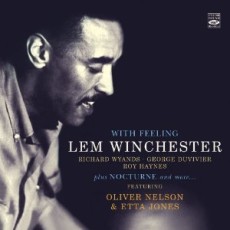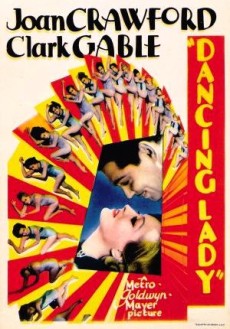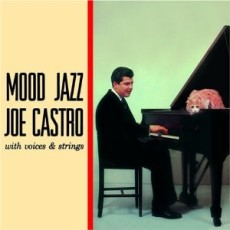
Daily Dose Of Jazz…
George Duvivier was born on Aug 17, 1920 in New York City. He took up the cello and also the violin while in high school before settling on the bass. He also learned composition and scoring before going out on the road with Lucky Millinder and then with the Cab Calloway bands of the early 40s after a stint in the army. An excellent composer, George scored many tunes for those two big bands.
George was a freelance bassist for most of his life, never belonging to any one particular group for any extended period of time, but has played with some of jazz’s greatest, such as Bud Powell, Eddie “Lockjaw” Davis, and Shirley Scott.
A prolific sideman, Duvivier recorded more than 100 albums with the likes of Kenny Burrell, Gene Ammons, Mildred Anderson, Art Farmer, Jimmy Forrest, San Getz, Etta Jones, Oliver Nelson, Lalo Schifrin and Johnny Lytle among numerous others. In 1956, Duvivier played in the movie orchestra in the film, “The Benny Goodman Story”.
During the 1970s he was a member of Soprano Summit and one of his last performances was on Late Night with David Letterman in 1983, accompanying singer/songwriter Tom Waits.
Double-bassist George Duvivier died of cancer in his Manhattan home on Jul 11, 1985.
More Posts: bass

Hollywood On 52nd Street
Everything I Have Is Yours easily entered the jazz catalogue and was written by Burton Lane and the lyrics by Harold Adamson, published in 1933 and was first sung by Art Jarrett in the 1933 film Dancing Lady. The musical film starred Joan Crawford, Clark Gable in the lead roles and featured Franchot Tone, Fred Astaire, Robert Benchley and the Three Stooges.
The Story: Janie Barlow is a young dancer who is reduced to stripping in a burlesque show. Arrested for indecent exposure, she’s bailed out by millionaire playboy Tod Newton, who was attracted to her while slumming at the theatre with his society pals. When she tries to get a part in a Broadway musical, Tod intercedes with director Patch Gallagher to get her the job: he’ll put his money into the show, if Janie is given a part in the chorus. Even though he needs the money, Patch is resistant, until he sees Janie dance and realizes her talent.
When, after hard work and perseverance, Janie is elevated to the star’s part, replacing Vivian Warner. Tod is afraid he’ll lose any chance of gaining her affection if she becomes a star, so he closes the show, and Janie, out of work, goes away with him. Patch starts rehearsals up again using his own money, and when Janie returns and finds out the Tod has deceived her and manipulated things behind the scenes, she dumps him and joins up with her new sweetheart, Patch, to put on the show, which is a smash hit.
Sponsored By
www.whatissuitetabu.com

Daily Dose Of Jazz…
Alvin Queen was born in the Bronx, New York on August 16, 1950. He studied drums as a child and at 16 played for Ruth Brown, Don Benny Green and guitarist Tiny Grimes in 1969. He was asked to replace Billy Cobham and started his tenure in the Horace Silver Quintet.
He has played with the George Benson Quartet and worked with Charles Tolliver on several occasions, rejoining him in 1971. During the Seventies, he lived in Canada, before settling in Switzerland in 1979 and creating the label Nilva, an anagram of his first name.
Over the course of his career he has played with the likes of Michael Brecker, Kenny Drew, Bennie Wallace, Johnny Griffin, Eddie Lockjaw Davis, Pharaoh Sanders, John Patton and George Coleman among others. His who’s who list continues with Ray Drummond, John Hicks, Billy Saxton, Dusko Goykovich and James Spaulding as well as a host of European players in recent years.
Drummer, composer and bandleader Alvin Queen continues to perform and record, to date having nine albums under his belt as a leader.
More Posts: drums

Daily Dose Of Jazz…
Joe Castro was born Joseph Armand Castro on August 15, 1927 in Miami, Arizona. He went to school in Pittsburgh, California in the bay area north of Oakland. He began playing piano professionally at the age of 15, enrolled at San Jose State University but matriculation was interrupted twice—first by a stint in the army from 1946 to 1947 and then when he formed his first jazz trio working on both the West Coast and in Hawaii.
In 1956 Castro moved to New York City where his trio successfully appeared in the city’s top jazz clubs—Basin Street, The Embers, The Hickory House and Birdland, receiving critical acclaim from Leonard Feather and Dave Brubeck. In 1958, he moved to Los Angeles to be associated almost exclusively with Teddy Edwards, Billy Higgins and Leroy Vinnegar.
Castro recorded his debut album “Mood Jazz” in 1956 and would go on to perform extensively with The Teddy Edwards Quartet while also making two of his own recordings as a leader for Atlantic Records.
In the early 1960s, tobacco heiress/jazz enthusiast Doris Duke and her long-term boyfriend, Castro, along with silent partner and friend Duke Ellington, formed record company Clover Records and music publishing company Jo-Do. Castro’s third album as a leader, entitled Lush Life was the only album released on Clover Records. Clover also released a 45-rpm single of the tracks “Lush Life” and “Bossa Nova All The Way” both taken from the same album.
By 1966, Jo-Do, Clover, and the Castro-Duke relationship had failed, and all three were shortly dissolved and the sides remain unreleased to this day. Renowned bassist Oscar Pettiford recorded an original entitled “The Pendulum at Falcon’s Lair” in 1956.
From 1959 to 1960 Castro also backed vocalists Anita O’Day and June Christy and was music director for Tony Martin from 1961 to 1963. Other sidemen for Castro’s trios and quartets included Chico Hamilton, Red Mitchell, Ed Shonk and Howard Roberts.
Castro moved to Las Vegas in the 1970s and continued to accompany vocalists and play in Las Vegas pit bands until he became the musical director for the Tropicana Hotel’s Folies Bergere. After Castro retired from the Tropicana, he continued to perform in jazz combos in Las Vegas and California until his death on December 13, 2009.
More Posts: piano

Daily Dose Of Jazz…
Hezekiah Leroy Gordon Smith was born August 14, 1909 in Portsmouth, Ohio and was better known in the jazz circles as violinist Stuff Smith. He studied violin with his father, cites Louis Armstrong as his primary influence and inspiration to play jazz, and like Armstrong, was a vocalist as well as instrumentalist.
In the 1920s, Smith played in Texas as a member of Alphonse Trent’s band. After moving to New York he had a regular gig with his sextet at the Onyx Club starting in 1935, performed with Coleman Hawkins as well as with younger musicians such as Charlie Parker, Dizzy Gillespie and later Sun Ra.
After signing with Vocalion in 1936, Stuff had a big hit with “I’se A Muggin'” and was billed as Stuff Smith and his Onyx Club Boys. He recorded for Decca in 1937 and Varsity in 1939-1940. He is well known for the song “If You’re A Viper” and is featured in several numbers on the Nat King Cole Trio album, After Midnight.
Part of Smith’s performance at what is considered the first outdoor jazz festival, the 1938 Carnival of Swing on Randall’s Island turned up unexpectedly on audio engineer William Savory’s discs, which were self-recorded off the radio at the time, then long-sequestered.
Smith was critical of the bebop movement, although his own style represented a transition between swing and bebop. He is credited as being the first violinist to use electric amplification techniques on a violin. He contributed to the 1938 tune “It’s Wonderful” often performed by Louis Armstrong and Ella Fitzgerald throughout their careers.
He moved to Copenhagen in 1965, performed actively in Europe, record with Oscar Peterson, Niels-Henning Orsted Pederson, Kenny Drew, Alex Riel, Stephane Grappelli and Jean Luc Ponty among others until his passing away in Munich on September 25, 1967.
Stuff Smith, one of the jazz industry’s preeminent violinists of the swing era is one of the 57 jazz musicians photographed in the 1958 portrait “A Great Day In Harlem”.



